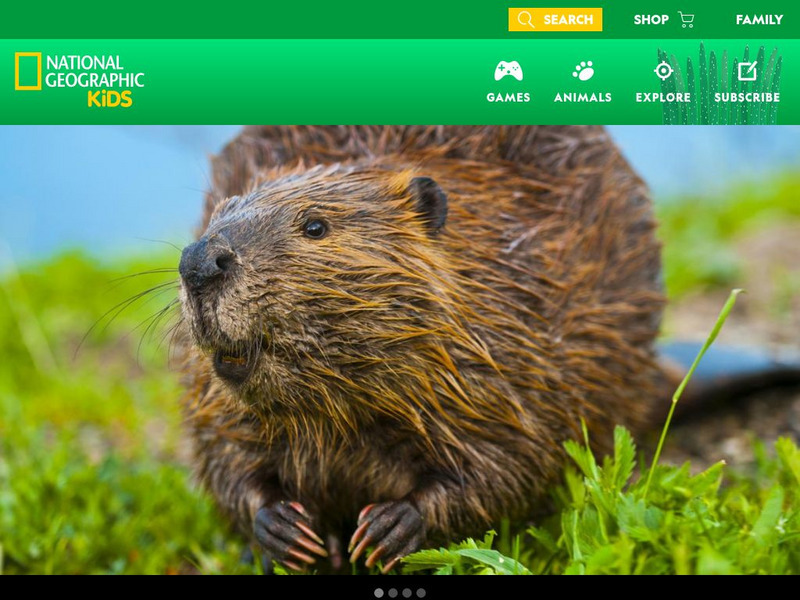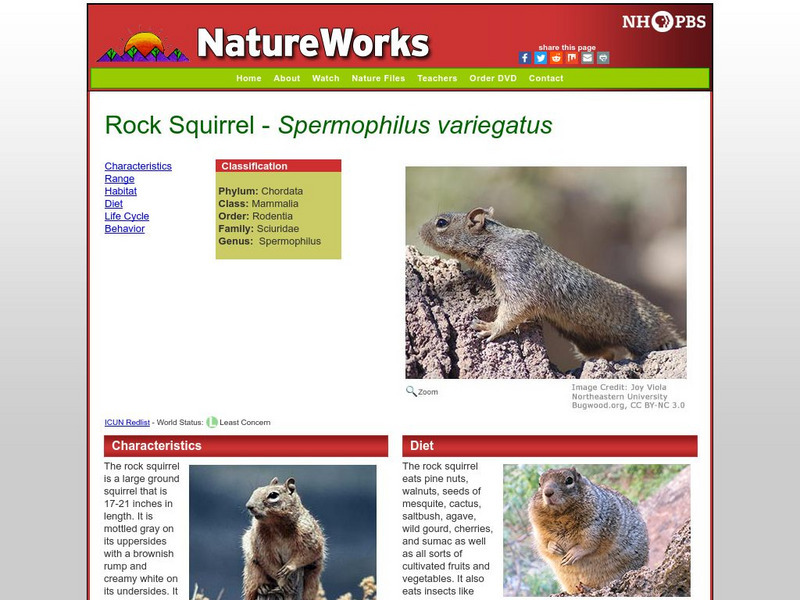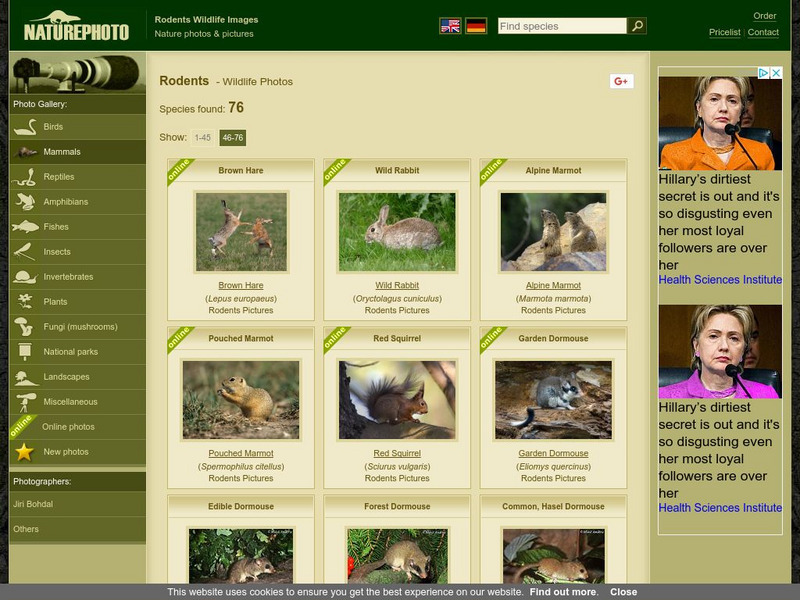BBC
Bbc: Nature Wildfacts: Capybara
Use this site to see photos of this rodent of unusual size. Be sure to read the detailed fact sheet to learn more.
PBS
Nh Pbs: Nature Works: Olympic Marmot
This site created by NatureWorks focuses on the Olympic Marmot. The content of this resource includes a look at this species' characteristics, range, habitat, food, life cycle and diet.
Royal Canadian Geographical Society
Canadian Geographic: Animal Facts: Porcupine
Learn fast facts, physiology, habitats, behaviors, and range of the porcupine.
National Geographic Kids
National Geographic Kids: Animals: Beavers
Click-through facts-and-photo file about beaver characteristics, diet, and habitat. Includes a map of the countries that pinpoint its range and a video that shows these large rodents in their habitat.
PBS
Nh Pbs: Nature Works: Rock Squirrel
This site provides a look at the Rock Squirrel. Come and explore the characteristics, life cycle, diet, habitat, behavior and range of this fascinating rodent.
TED Talks
Ted: Ted Ed: Are Naked Mole Rats the Strangest Mammals?
Thomas Park explains how mole rats' peculiar traits have evolved over millions of years to make them uniquely suited to survive harsh conditions- especially long periods without oxygen.
CK-12 Foundation
Ck 12: Life Science: 10.22 Mammal Classification
Understand how all mammals are divided into groups by similar characteristics.
Oregon Zoo
Oregon Zoo: African Crested Porcupine
Get to know the facts, behavior, breeding habits, vital statistics, and conservation of the African crested porcupine, the largest porcupine in the world.
San Diego Zoo Global
San Diego Zoo: Kids: North American Porcupine
Colorful resource for learning useful facts about North American porcupines with photographs as well as information regarding their physical characteristics and unique features.
Other
San Francisco Zoo: Black Tailed Prairie Dog
Meet the Black-Tailed Prairie Dog, discover fascinating facts, and learn about physical characteristics, diet, habitat, behavior, and conservation status.
Other
Zoo Miami: African Crested Porcupine
Contains a general overview plus interesting facts about the African crested porcupine's diet, size, weight, habitat, and conservation.
Other
Minnesota Zoo: Chinchilla
Get fun facts about chinchillas. Learn what they eat, where they live, what they do, and conservation status.
Canadian Museum of Nature
Canadian Museum of Nature: Muskrat
Get to know the muskrat.. colored photos, description, life cycle, map of habitat, food. Only the basic details of this animal are given, making this site perfect for younger researchers.
Nature Canada
Nature Canada: Suffield National Wildlife Area: Mammals at Risk
Ord's Kangaroo Rat and Western Harvest Mouse are two prairie mammals that are being affected by the erosion of their habitats. The proposed drilling of gas wells in Alberta and the loss of prairie grasslands to agriculture are factors...
Chicago Zoological Society
Chicago Zoological Society: Zoo Explorer: Naked Mole Rat
Get acquainted with the naked mole-rat by browsing this brief overview from the Brookfield Zoo. This animal guide includes quick facts and information on its habitat, appearance, social skills, and breeding habits.
Orpheus Books
Q Files: Rodents
This site provides all kinds of information regarding rodents, small animals with short legs and a tail that can be long or barely visible. The rodent family includes mice, rats and squirrels, as well as beavers, dormice, lemmings and...
University of California
Ucmp: Placental Mammals
This brief article defines "placental mammals," lists examples of these animals, and describes the characteristics which render their classification.
Pittsburgh Zoo & PPG Aquarium
Pittsburgh Zoo: American Beaver
The American beaver is North America's largest rodent. Use this resource to discover more about this beaver known for building dams, canals, and lodges.
Saint Louis Zoo
Saint Louis Zoo: Black Tailed Prairie Dog
Discover fun facts and learn about the habitat and behavior of the black-tailed prairie dog.
Other
Arizona Sonora Desert Museum : Animal Fact Sheet: Harris's Antelope Squirrel
This fact sheet on Harris's antelope squirrel provides details on physical characteristics, range, habitat, conservation, diet, reproduction, and other extra-fun facts.
Curated OER
Merriam Webster: Visual Dictionary Online: Rodents
Labeled diagram of a several common rodents.












